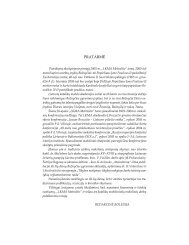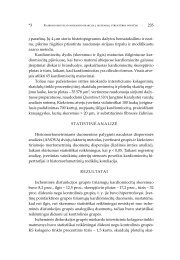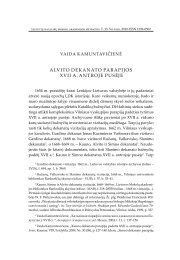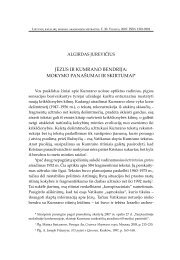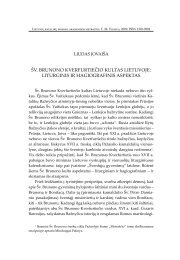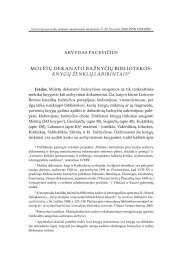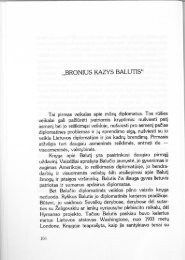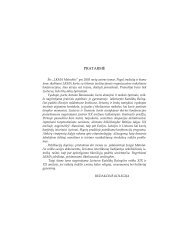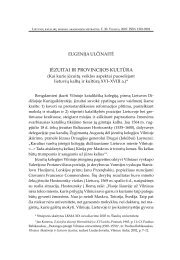„ViETiniAi“, „lEnKiŠKi“ iR „liETuViŠKi“ - Lietuvių katalikų mokslo ...
„ViETiniAi“, „lEnKiŠKi“ iR „liETuViŠKi“ - Lietuvių katalikų mokslo ...
„ViETiniAi“, „lEnKiŠKi“ iR „liETuViŠKi“ - Lietuvių katalikų mokslo ...
Create successful ePaper yourself
Turn your PDF publications into a flip-book with our unique Google optimized e-Paper software.
172 žilvytis Šaknys<br />
*18<br />
the 1920’s until today. Comparable investigations in these places in the interwar<br />
period and at the beginning of the 21st century were carried out on the prohibitions<br />
of merry making during Advent and Lent, the holy celebrations of Christmas<br />
and Easter, the marriage prognostication of St. Andrew’s Day and Christmas Eve,<br />
masked outdoors fete on Shrove Tuesday and during the period from Christmas<br />
to the Epiphany, the public lashing with a verba (a branch of willow, juniper, or<br />
other trees, representing the palms placed before Jesus on his entering Jerusalem)<br />
on Palm Sunday, the Easter water sprinkling, the traditions of decorating eggs on<br />
Easter and the following Sunday and lalavimas (youth parades from farmstead to<br />
farmstead singing special songs) during Easter.<br />
The investigations indicated that similar customs were alive in these places<br />
in the interwar period. The attitude of the ruling administrations in Socialist Poland<br />
and the Soviet Union to religious practices and the folk customs more or less<br />
related to them were different. In Soviet Lithuania the traditional youth customs<br />
disappeared or changed more rapidly. In the period of National Revival (1988-<br />
1990) many of these customs were restored or adapted forms modified during the<br />
Soviet period. In both cases the customs lost almost all local originality. During<br />
the soviet period and especially today the lithuanians in the area around Punsk<br />
are adopting these customs, giving priority to common Lithuanian and not local<br />
cultural traits passed from generation to generation. Finally, one must say that the<br />
majority of the calendar customs are closely tied with Christian culture and only<br />
rarely exhibit an ethnic character. The “Lithuanian” or “Polish” nature of customs<br />
is only a stereotype characterization formed by the people living in the border<br />
areas helping to identify themselves with one or another ethnic group.



